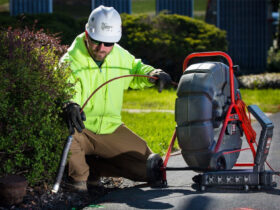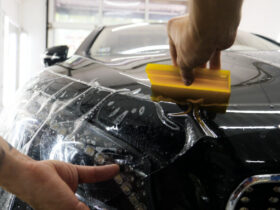Proper preparation: Before sanding your floors, ensure that they are clean and free from any dust, dirt, or debris. Remove all furniture and cover any nearby surfaces to prevent them from getting damaged or covered in dust.
Choose the right sandpaper: Select the appropriate grit of sandpaper for your specific floor type and condition. Coarse grits (around 24-40) are used for initial sanding to remove old finishes or deep scratches, while finer grits (around 80-120) are used for final sanding to achieve a smooth finish.
Use a professional-grade sander: Invest in a high-quality floor sanding, such as a drum sander or a random orbital sander, to ensure even and consistent sanding. These machines will make the process easier and more efficient.
Sand in multiple stages: Start with the coarsest grit sandpaper, and gradually work your way to finer grits. Begin with a 45-degree angle to the floorboards, and then go along the grain for the final passes. Repeat the process with each progressively finer grit until you achieve the desired smoothness.
Rules About FLOOR SANDING Meant To Be Broken
Rule: Always start sanding with the coarsest grit.
Break it: In some cases, starting with a slightly finer grit can be beneficial, especially if the floor is not heavily damaged or if you want to preserve more of the wood’s surface.
Rule: Progressively move to finer grits until reaching the smoothest finish.
Break it: For certain floor types, especially those with a rustic or distressed look, stopping at a slightly coarser grit can add character and maintain the floor’s original appearance.
Rule: Avoid using excessive pressure while sanding.
Break it: When dealing with stubborn stains or deep scratches, applying slightly more pressure with caution may be necessary to achieve a more even surface or remove imperfections.
Rule: Use the same sandpaper grit sequence for all floors.
Break it: Different types of wood, finishes, and conditions may require customized sandpaper grit sequences. Adapting the sequence to specific circumstances can lead to better results.
Why FLOOR SANDING Is The Only Skill You Need
Restoration and maintenance: Floor sanding is crucial for restoring old or damaged floors to their original condition. It helps remove scratches, stains, and uneven surfaces, improving the overall appearance and longevity of the floor. Regular maintenance through sanding can also prevent further damage.
Aesthetics: Floor sanding provides a smooth and even surface, making the floor more visually appealing. It allows for the application of various finishes, such as varnish or paint, enhancing the overall look of the space.
Value addition: Well-maintained floors can significantly increase the value of a property. If you possess floor sanding skills, you can offer your services to homeowners, businesses, or contractors who need their floors restored or maintained. This skill can be a lucrative source of income or a valuable addition to your professional repertoire.
Independence and cost savings: By learning floor sanding, you can take care of your own floor maintenance needs without relying on external professionals. This can save you money in the long run and give you greater independence in managing your living or working space.










